Urinals were once only seen in the male toilets in restaurants and shopping malls; however, lately, they are growing in popularity in homes as well, where you are also likely to find different types of urinals for both men and women.
The main reason for the rising popularity of urinals is that they are super easy to install, easy on the pocket, require little to no maintenance, and most importantly, they greatly help save water and prevent any kind of wastage.
If you happen to switch to urinals for the toilets and bathrooms in your home, you can easily install them on your own.
Below you will find a very easy guide on how to install a urinal, but before that, learn about the different types of urinals and urinal flushing systems there are in order to make a well-informed decision.
Different Types of Urinals
There are many different types of urinals, each of which varies in factors like function, design, materials used, type of mounting, and main features.
Although the purpose of any urinal is the same with seemingly similar benefits offered by each type, you will find that not all urinal systems are exactly alike.
Here are some of the most common types of urinals that you are likely to come across in numerous homes, offices, public places, and other similar areas.
Trough Urinal
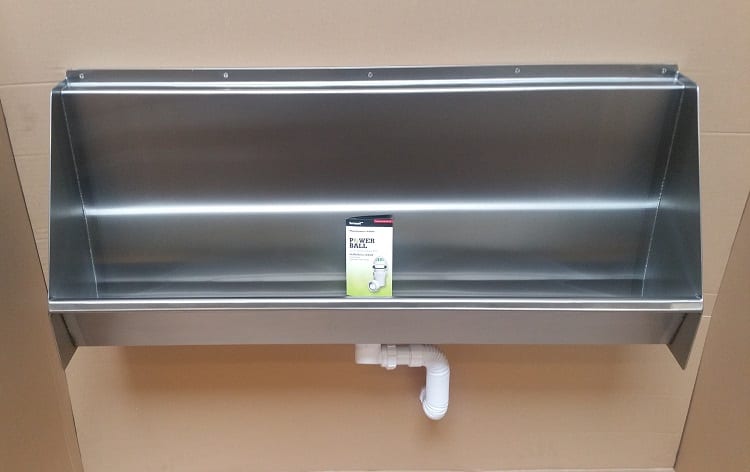
The design of this urinal resembles a feeding trough, which is why it’s called a ‘trough’ urinal.
It is most commonly found in public places such as malls, for instance, mainly because of two reasons.
Firstly, a trough urinal is a single unit that can accommodate as many as 7-8 individuals at the same time, making it a highly economical option.
Secondly, it only requires one direct plumbing connection, which makes installation fairly easy.
The trough urinal is typically made out of stainless steel in order to accommodate its big size and heavy weight, but porcelain ones also exist.
Although it’s a very inexpensive type of urinal, which is also easy to set up, the only drawback it has is that it is less private compared to an individual urinal.
Corner Urinal
As the name implies, a corner urinal has primarily been designed to fit the corner of any wall in the toilet.
It is a type of a flat-back urinal, and since it easily fits a corner, it’s an excellent space-saving option if you have a small bathroom or toilet.
Bucket Urinal
This is another quite common type of urinal that is shaped like an actual bucket.
You are likely to find a bucket urinal system in many public spaces, mainly because of how each bucket is highly versatile, regardless of the differences in design and shape.
Each bucket has its own sprouts and a separate drainage system.
A typical bucket urinal is crafted out of porcelain, but the much recent versions or models are fashioned out of many other materials such as polished wood, metal, and plastic.
Interestingly, you might also come across places and people that have taken the idea of a bucket urinal quite literally and have installed actual buckets to be used as a urinal.
Sensor Urinal
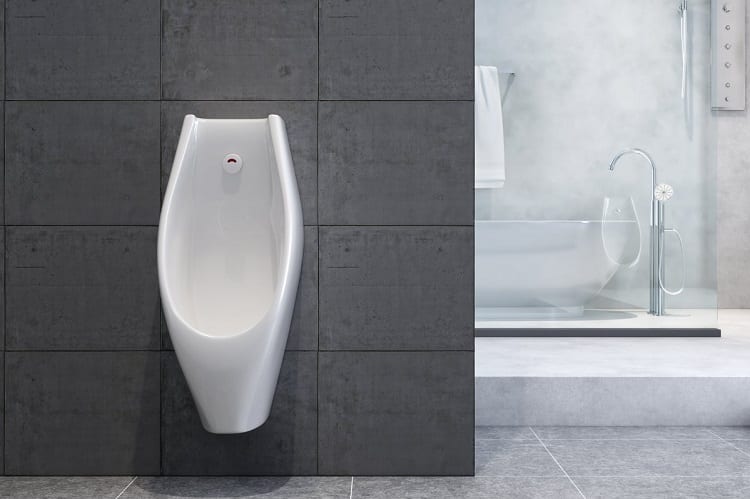
One of the most popular and modern types of urinals is the Sensor urinal.
This is the one that you normally see in shopping malls, airports, and even some high-end restaurants.
It is an automatic water flushing urinal system featuring flashing or blinking sensors that work by detecting human usage.
Once you are done using the urinal, the sensor detects that it is no longer being used, so it automatically flushes by itself.
The main benefits of a sensor urinal are that this type of urinal is extremely clean and hygienic.
The best part is that it uses a lesser amount of water as compared to many other common types of urinals.
Stall Urinal
A stall urinal comes in two different types: half stall urinal and full stall urinal.
The main difference between the two is that the latter is supported by the floor, whereas a flange is used to support the former model.
Squatting Urinal
As the name suggests, a squatting urinal is the one that requires you to adopt a squatting position in order to use it.
It is mounted on the floor and is typically made of ceramic. It is also known by other names in different parts of the world where they are found, such as ‘Indian toilets,’ ‘Asian toilets,’ or ‘Turkish toilets.’
The ‘term’ squat only has to do with an individual’s posture on the urinal and doesn’t indicate any other aspect of this urinal’s technology.
The slabs used in this type of urinal are can be made of a variety of materials other than ceramic, such as fiberglass, plastic, wood, concrete, or stainless steel.
Portable Urinal
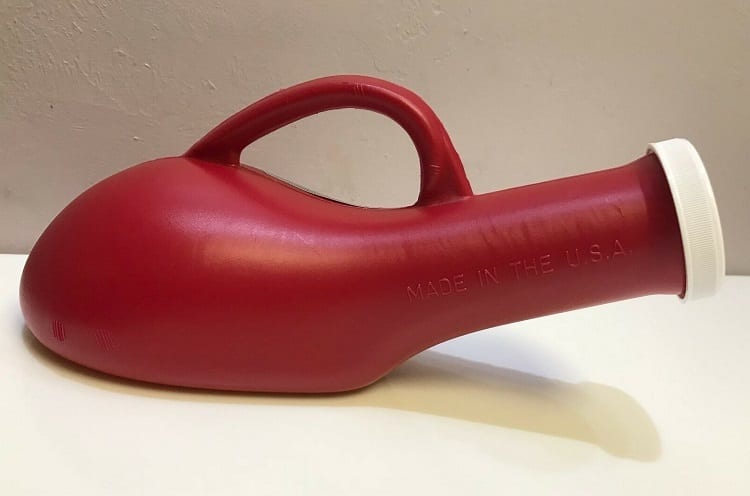
Also known as ‘bedside urinal,’ a portable urinal is one that you can carry anywhere with you. It is commonly used for traveling, but may also be used for the elderly or sick people.
Portable urinals are generally made of plastic or steel, both of which make it easy to carry the urinal wherever it’s needed without adding any extra weight.
You are likely to find different varieties of portable urinals for both men and women.
For instance, portable urinals for women have become very popular in recent years, which have made things fairly easy for them.
These urinals have become reliable tools for them since they allow women to urinate while standing up rather than having to resort to a sitting position on a public toilet seat, especially on camping and hiking trips, for instance.
Types of Urinal Systems
When you talk about installing a urinal, there are two main things to consider: the type of urinal and the flushing method of the urinal system.
We’ve covered the types of urinals in the previous section, so we’ll discuss the methods used by different urinal systems below.
There are two main methods or types: flush and waterless.
Flush System
This method or system comes in three main options: manual, timed, and automatic.
Manual
This type of flush urinal system generally features a lever or button that allows you to flush the system whenever you are done with it.
Both the lever and button are operated by hand and are usually located a little higher.
You might also come across some manual systems that have the button or lever located somewhere down to be used by the foot; however, this type is not very common nowadays.
Automatic
The automatic flush system is found in sensory urinals where there’s a beam or a sensor that detects human usage and flushes once the urinal is not in use anymore.
Timed
The timed urinal system, as the name implies, comes with a built-in electronic or mechanical timer that flushes the system every once in a while even when the urinal isn’t being used.
What are Water-Free Urinals?
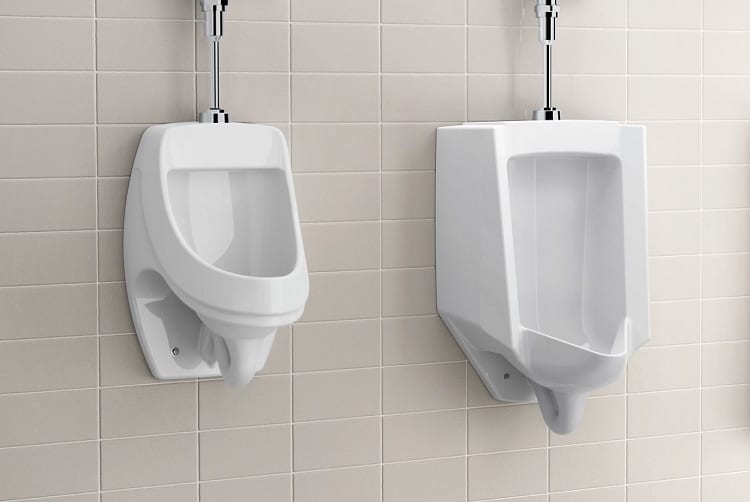
Also often referred to as ‘waterless urinals,’ this urinal uses a flush system that has primarily been designed to save water and prevent any kind of wastage.
Water-free urinals are quite similar to the traditional urinals that you commonly see in malls, except that the former doesn’t use any plumbing system.
There are four main types of water-free urinals: biological blocks, liquid sealant type, membrane traps, and integrated taps.
Biological Blocks
This type of water-free urinal comprises of blocks that are called ‘bio-blocks.’
The main reason why they are called biological is that they contain microorganisms that tend to feed on the urine to remove the unpleasant odor.
The microorganisms also help prevent the urine from causing any kind of blockage.
Each biological block lasts up to a maximum of a hundred uses, which suggests that you need to replace them frequently.
As convenient as this type of water-free urinal might sound, it does require extensive cleaning to keep it hygienic, as compared to other waterless types.
Liquid Sealant Cartridges
The liquid sealant type of urinal comprises of cartridges that help trap the urine and its odor, pretty much like the biological blocks.
The main principle or concept used here is called the ‘relative density’ or ‘specific gravity.’
Basically, the trapping liquid inside the cartridge has a lower specific gravity than the urine.
This helps it successfully trap the urine and remove any kind of unpleasant odor.
Membrane Traps
This water-free urinal features membrane traps that act like one-way valves. The trap is made of such a material that keeps the valves close at all times.
However, when you have to use the urinal, the valves or the membrane traps open only in one direction, allowing the urine to flow through.
Since they open only one-way, it prevents the urine from going back into the urinal, further preventing any kind of odor from making its way back.
Integrated Traps
Lastly, integrated traps use a fixed basin trap design that replaces the standard water flush urinal system.
This is quite similar to the liquid sealant type, except that it stores the urine within the sealant only, which then needs to be flushed almost every 2-4 weeks with the help of large amounts of water at very high pressure.
The overall benefits of all these four types of water-free urinals are the same: they save water, money, and time.
Furthermore, they also ensure maximum convenience by eliminating the need for things like blockage removals, repairs and maintenance, deodorizers, and flush valve repairs, to name a few.
How Do You Hang a Urinal?
Installing a urinal often requires the assistance of a professional plumber; however, if you wish to do it on your own, you can easily do it with the help of a few tips and guidelines.
All you need are some essential tools, supplies, and a whole lot of patience.
Take a look at this short, useful guide on how to install a urinal on your own without any problem or inconvenience.
Step 1: Gather Essential Tools
First things first, you need to gather all the supplies that are required to hang or mount a urinal on a wall.
Some of the basic tools and accessories that you will need include:
- Tape measure
- Electric drill
- Clean rag
- PVC cement
- Tape
- Pencil
- Level
- Plywood
- Drill bits
- Drywall saw
- Carpenter’s level
Step 2: Fit the Mounting Board for Support
Once you have all the tools well in place, the next step is to fit a mounting board to the wall in order to provide support to the urinal.
For this, take a piece of weather-treated plywood and then adequately secure it on the wall studs with the help of some nails.
Step 3: Add a Water Line
At this point, you need to determine where the water supply will be located so that you can add the water line.
You can use a stencil here to mark the exact locations at a height of 24 inches. Drill pilot holes with the help of a drill machine.
The holes will be drilled where you’ll be mounting the hanger screws.
Then, use the drywall saw to remove the required drywall in order to attach the wastewater line along with the water supply line in the marked location.
Place the pipes in the correct position in a way that they attach to the front of the faucet.
Try to make sure that you add a shut-off valve before placing the pipe in its desired position.
This will make it easy for you to turn off the water supply whenever you want.
Step 4: Attach the Urinal Wall Hangers
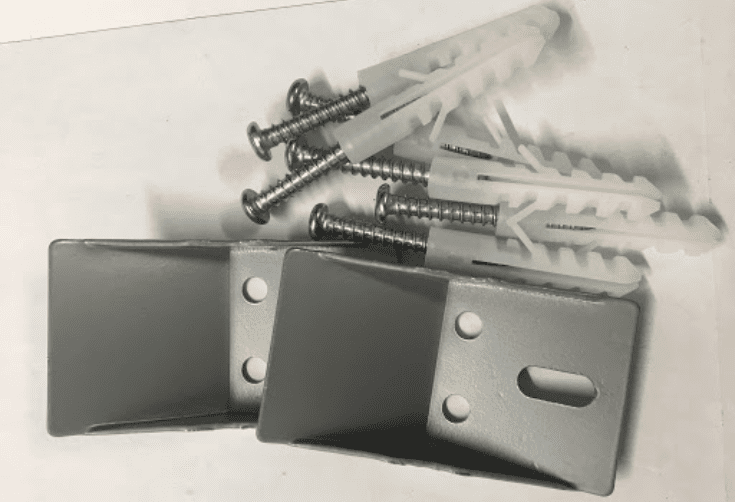
With the help of the supplied screws and nails, you should now mount the urinal wall hangers in their respective positions.
Use a carpenter’s level to make sure that the hangers are mounted correctly at the same level.
You can adjust them as per your requirements.
Also, another important thing to do is to screw the wall hangers not only to the wall but also to the supporting wooden mounting board that you attached earlier in step 2.
Step 5: Install a Drain in the Urinal
Before hanging the urinal on the wall, fit the drain first into the urinal.
Add a layer of caulk to the ring of metal present at the bottom of the urinal by placing a strainer into the hole.
Press it down further till it is sealed tightly.
Additionally, add a combination of rubber and metal washers on the other side of the urinal, underneath the strainer, and secure it further with the help of a nut or two.
Step 6: Install Waste Outlet
With the help of PVC cement, connect the waste outlet to the waste pipe that you installed earlier.
Make sure that the outlet connection is exactly where it should be to prevent any problems later.
Step 7: Hang the Urinal
This is the final step for how to install a urinal. Carefully lift it and hold it above the wall hangers and align the position of the urinal according to that of the waste outlet.
Attach it in a way that the waste opening is located behind the urinal.
Place it well into the hangers and tighten the screws just enough to hold the urinal firmly against the wall.
Over-tightening will simply crack the porcelain surface of the urinal, so don’t tighten the attachment screws too much.
How High Should a Urinal Be Mounted?
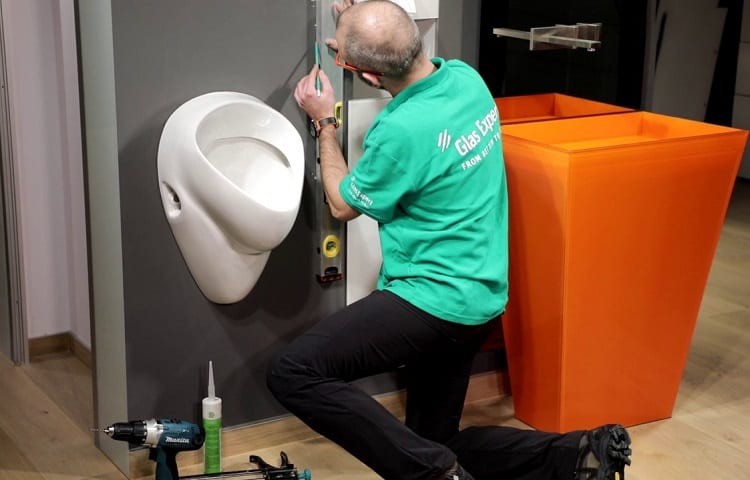
For standard home use, installing a wall-mounted urinal should be done at a height of 24 inches, which is the average height for mounting a wall urinal.
The said 24 inches are basically measured from the floor all the way up to the rim of the urinal.
Although this is the standard height for a wall-urinal, it can still vary depending on where you live because different residential communities tend to have specific regulations and rules when it comes to urinals.
It is best to check the local codes of your building when installing a urinal in your bathroom or toilet.
Do Urinals Have Built-In Traps?
Yes, some models and types of urinals do come with built-in traps that play a very important role in the entire process.
For instance, a standard urinal has a pipe known as a “P-trap” where all the water is flushed into it by the urinal.
This P-trap is designed in a way that it forms a water seal to prevent the escape of sewer gases into the atmosphere.
Also, most water-free or waterless urinals feature a built-in ‘EcoTrap,’ which serves two main purposes.
Firstly, it allows a smooth, uninterrupted flow of urine to the bottom of the urinal until it reaches plumbing sewer connections.
Secondly, it also prevents the escape of sewer odors and stops them from affecting the indoor air quality of the restroom.
Are Urinals Hygienic?

The thing with urinals is that you must use them properly if you wish to ensure their good hygiene and cleanliness.
Additionally, you need to follow a proper cleaning routine if you have urinals in your home.
Try to make sure that the faucets, pipes, and other fittings are cleaned daily and sanitized regularly.
Additionally, you can also place disposable urinal mats on the floor in order to help dispel unpleasant odor from the air and keep it fresh.
However, on the other hand, waterless or water-free urinals that we discussed earlier are considered to be completely hygienic since they don’t make use of any water.
No water means that the surface of these urinals is always dry and barely ever damp, which greatly prevents the growth of bacteria and mold. This ensures great hygiene and cleanliness at all times.
Final Word
Now that you’ve learned how to install a urinal, you can easily make the switch from traditional toilets to modern, waterless urinals that not only prevent water wastage, but also save a lot of your time, money, and efforts at the same time.
